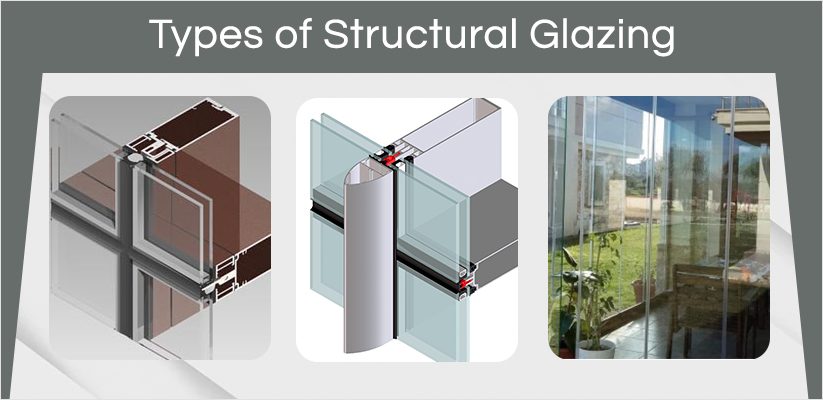
A structural glazing system is a mechanism for connecting specialty glass to an aluminium frame using silicone sealants. While technically any form of glass may be used in structural glazing, the type should be carefully chosen considerating factors like energy saving and eventual interior décor. The aluminium frames used must, of course, be of exceptional strength while the silicone sealants used should be high-performance sealants that are capable of protecting the structure against air, dust, moisture, and heat. Structural glass can be used in a number of architecturally inventive and aesthetically appealing ways in residential houses. They are also a natural method to provide room and natural light without the need for frames or limiting structural options.
Post your Requirement
Structural Glazing forms a very important part of facade design. Over the years it has evolved and it has been very challenging to find good structural glazing solutions.
Why would you choose a Structural Glazing System?
In comparison to traditional captured systems, structurally glazed systems provide more transparency. Due to the lack of metal on the surface, there are fewer visible disruptions, resulting in a smooth, continuous glass appearance.
Pressure plates and caps on traditional captured curtain wall systems can conduct large amounts of heat into or out of the façade depending on the season while there is minimal thermal bridging with structural glass since there is little to no visible outside metal, reducing energy consumption expenses. Structural glazing has the greatest impact on large, commercial buildings, but it also has a variety of other uses, such as glass entrances, skylights, canopies, and elevator enclosures.
The different types of structural glazing systems are:
- Four-Sided Framed Glazing:
- Two-Sided Framed Glazing:
- Frameless Glazing System
- Unitized Curtain Wall System
- Stick Glazing
- Fin Supported Glazing
- Tension Systems
Structural glazing is a critical component of the facade design. It has developed through time and finding effective structural glazing solutions has been quite difficult. The following are different types of structural glazing systems:
1. Four-Sided Framed Glazing:
In four-sided framed glazing a frame is fabricated on all four sides of the glass to support it. During installation the horizontal and vertical support members are framed on the building. Glass is used as a transparent infill panel.
2. Two-Sided Framed Glazing:
In a two-sided framed glazing the support for glass is only on two sides. It is either fabricated in the horizontal or in the vertical direction. The glass is then fixed in the mullions.
3. Frameless Glazing System
This frameless glazing system is made up of sliding folding panels that travel over a specific surface without the use of bearings. The whole system’s weight is transferred to the bottom track. These are quickly noticeable and may truly take a property’s appearance to the next level.
Advantages of Frameless Glazing
- Produces a minimalistic look that allows light to enter the structure
- These are low-maintenance and cost-effective materials
- Provide a seamless aesthetic and functional relationship between the inside and outside of a structure.
4. Unitized Curtain Wall System
A unitized curtain-wall system is made up of big modules that are pre-assembled, joined, and glazed in vertical and horizontal modules to form a full system. They are semi-arranged which makes the installation quite easy. Thermal efficiency, sound transmission, and fire safety are essential performance objectives of the unitized curtain-walling system.
Advantages of Unitized Curtain Wall System
- The construction pace is great since all of the panels are pre-assembled.
- This system is more reliable and manageable.
- They neither corrode nor deteriorate as compared to other building materials.
5. Stick Glazing
In Stick Glazing, glass panels are installed with frames using pressure plates and gaskets. These glazing systems are adaptable, allowing alternative ways such as sliding windows and doors to be included. Because they are not dependent on having a huge factory, they are less specialized.
Advantages of Stick Glazing
- A wide range of system options is available at extremely affordable rates and with quick lead-in periods.
- It is appropriate for angular or complicated facades.
- Sightlines are smaller in this arrangement, making it look good with all kinds of frames.
6. Fin supported Glazing
Vertical glass sheets known as glass fins are utilized to reinforce the glass facade. The glass sheet is installed perpendicular to the building’s face. Special fasteners and silicone sealant are used to secure it to the structure. The sealants used in structural glazing are quite robust, long-lasting, and UV-resistant.
Advantages OF Fin Support Glazing
- Improve the amount of natural light in interiors while improving façade visibility.
- They look stylish and versatile in all kinds of frames.
- These systems are highly customizable so they can be altered to any size.
7. Tension systems
In a tension system, high-tensile cables or stainless steel rods are used to impose the facade’s stresses on the main
structure. As a result, the amount of solid structural parts visible on the project is reduced, boosting the facade’s
transparency. They offer a totally unobscured view from indoors as well as outdoors.
Advantages OF Tension System:
- Maintain very clear sightlines from both inside and outside.
- Can be geometrically structured in different shapes.
- Provide a unique and eccentric aesthetic to the building which catches the attention


















Post A Comment